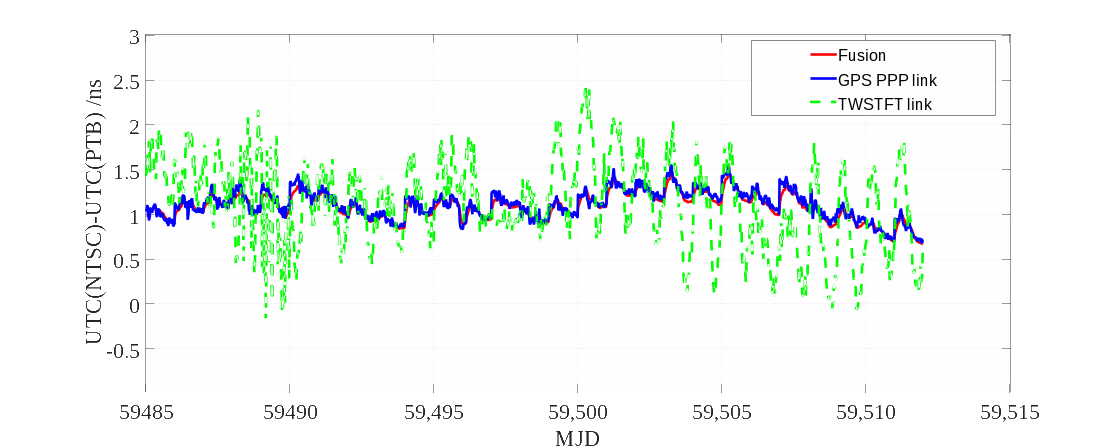Recently, the time keeping group of NTSC proposed a new method for data fusion in the international time transfer links of the national time reference system. The new method, titled as "Time Transfer Link fusion algorithm based on wavelet multi-resolution analysis", was published in the internationally renowned journal, Measurement.
As one of the most important part of UTC caculation, the theoretical research and technological breakthrough of the international time transfer link have always been the relentless pursuit of researchers in the field of TAI.
Currently, the main international time transfer links used for calculating UTC are based on GNSS PPP and TWSTFT technology. The combine of different link technologies can enhance the reliability of the international comparison link. However, there are not only differences in accuracy but also in sampling intervals between different links. Before performing data fusion, it is necessary to ensure precise matching of data sampling times and accuracies. Traditional time-domain interpolation or down sampling methods often lead to the loss of data characteristics when dealing with such issues.
To overcome this technical challenge, researchers at NTSC proposed a data fusion scheme that combines wavelet multi-resolution analysis and Kalman filtering algorithm. The core of this technique lies in utilizing the multi-resolution characteristics of wavelet analysis to decompose the original data into sub-signals at various scales. These sub-signals not only contain the detailed information of the original data, but also maintain high accuracy and stability across different time scales. By fusing sub-signals at different scales, this method can effectively reduce noise and interference in the original data, thereby improving the accuracy (Figure 1) and stability (Figure 2) of the time transfer link.

Figure 1:Accuracy of the time transfer link

Figure 2:Stability of the time transfer link
This research work not only enhances the performance of time transfer links but also provides new ideas and methods for data processing in other fields. In the future, with the continuous development and improvement of technology, multi-resolution data fusion technology will play a significant role in more areas. This lays a solid foundation for further improving the performance of international time transfer links.
CONTACT:
XIONG Tiantian
National Time Service Center, Chinese Academy of Sciences
gjhz@ntsc.ac.cn
 Print
Print